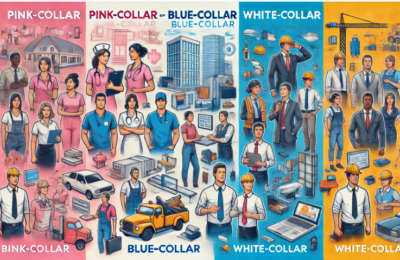Picture this: you’ve just found your dream job, and you’ve poured your heart and soul into crafting the perfect resume. You hit “submit” with a sense of accomplishment and excitement, but then… silence. Days turn into weeks, and you’re left wondering if your application has disappeared into the digital abyss. Sound familiar? Don’t worry; we’ve all been there!
Following up after submitting a resume is a crucial step in the job search process that many candidates overlook. It’s an opportunity to showcase your enthusiasm, reiterate your qualifications, and keep your name fresh in the employer’s mind. But how do you follow up without coming across as pushy or desperate? That’s where this guide comes in!
What You’ll Learn
In this comprehensive article, we’ll walk you through the essential steps of following up after submitting your resume. Here’s what you can expect to learn:
- The importance of following up and how it can increase your chances of landing an interview
- The optimal timing and frequency for follow-ups
- The most effective methods of communication for different situations
- Tips for crafting compelling follow-up messages that grab the employer’s attention
- Strategies for handling various response scenarios, from interview invitations to rejections
By the end of this guide, you’ll be equipped with the knowledge and confidence to take control of your job search and make a lasting impression on potential employers. So, let’s dive in and explore the art of the follow-up!
Wait for the Right Time
One of the most common questions job seekers ask is, “When should I follow up after submitting my resume?” The answer isn’t always straightforward, as it depends on various factors such as the company’s hiring timeline and the specific instructions provided in the job listing.
Understanding the Company’s Hiring Timeline
Before hitting “send” on that follow-up email, take a moment to consider the company’s hiring process. Some organizations have a structured timeline for reviewing applications, conducting interviews, and making decisions, while others may have a more fluid approach.
If the job listing includes information about the expected hiring timeline, use that as a guide. For example, if the posting states that interviews will be conducted within two weeks of the application deadline, it’s best to wait until after that period before reaching out.
Giving the Employer Sufficient Time
Put yourself in the employer’s shoes: they’re likely juggling multiple responsibilities and reviewing numerous applications. It’s essential to give them enough time to process your resume and make initial evaluations.
As a general rule of thumb, it’s advisable to wait at least 1-2 weeks before following up. This allows the employer to review your application thoroughly and reduces the risk of your follow-up being perceived as impatient or pushy.
When to Follow Up Sooner
There are some instances where it may be appropriate to follow up sooner than the 1-2 week mark. For example, if you have a personal connection within the company who can vouch for your application, a quicker follow-up may be warranted.
Similarly, if you’ve applied for a position that requires immediate filling or have additional information that could strengthen your candidacy (e.g., a newly acquired certification), a prompt follow-up could work in your favor.
Remember, the key is to strike a balance between showing enthusiasm and respecting the employer’s time and process. When in doubt, err on the side of patience and professionalism.
Choose the Best Method of Communication
Now that you’ve determined the appropriate time to follow up, the next step is to choose the most effective method of communication. In today’s digital age, there are several options available, each with its own advantages and considerations.
Email: The Preferred Choice
Email is by far the most common and preferred method for following up after submitting a resume. It allows you to craft a clear, concise message that can be easily referenced and responded to by the employer.
When opting for email, make sure to:
- Use a professional email address (e.g., firstname.lastname@email.com)
- Include a clear subject line that references the position you applied for
- Address the recipient by name (if known) or use a general salutation (e.g., “Dear Hiring Manager”)
- Keep the message brief and to the point
- Proofread for any typos or grammatical errors
Phone Calls: When to Pick Up the Phone
While email is the go-to method for most follow-ups, there are situations where a phone call may be more appropriate. For instance, if the job listing specifically requests applicants to call or if you have a direct contact within the company who has encouraged you to reach out by phone.
When making a follow-up call, keep these tips in mind:
- Prepare a script or talking points to ensure you cover all the essential information
- Introduce yourself and reference the position you applied for
- Speak clearly and professionally, maintaining a friendly tone
- Be respectful of the recipient’s time and keep the call brief
- Have a pen and paper ready to jot down any important details or next steps
LinkedIn: Leveraging Your Professional Network
LinkedIn has become an invaluable tool for job seekers, providing a platform to connect with professionals in your field and showcase your experience and skills. When it comes to following up, LinkedIn can be a powerful ally.
Consider these strategies:
- Connect with the hiring manager or recruiter on LinkedIn, if you haven’t already
- Send a personalized message expressing your interest in the position and reiterating your qualifications
- Engage with the company’s LinkedIn content by liking, commenting, and sharing relevant posts
- Join industry-specific groups and participate in discussions to increase your visibility
By leveraging LinkedIn, you can demonstrate your proactive approach and build valuable connections that may lead to future opportunities.
Craft a Compelling Follow-Up Message
You’ve chosen the right time and method for your follow-up, but what should you actually say? Crafting a compelling message is key to making a positive impression and increasing your chances of moving forward in the hiring process.
Email Subject Line: Make It Count
Your email subject line is the first thing the employer will see, so it’s crucial to make it count. A clear, concise subject line that references the position you applied for will increase the likelihood of your message being opened and read.
Examples of effective subject lines include:
- “Following Up on [Position] Application – [Your Name]”
- “Checking In: [Position] Application – [Your Name]”
- “Update on [Position] Application – [Your Name]”
Email Body: Reiterate Your Interest and Qualifications
The body of your follow-up email should be brief, yet informative. Start by expressing your continued interest in the position and the company, highlighting what specifically draws you to the opportunity.
Next, reiterate your qualifications and how they align with the role’s requirements. If you have any updates to your resume or portfolio since submitting your application, mention them briefly.
Example:
“Dear [Hiring Manager],
I hope this email finds you well. I wanted to follow up on my application for the [Position] role at [Company]. I remain extremely interested in the opportunity and believe my skills and experience make me a strong fit for the position.
Since submitting my application, I have completed an additional certification in [Skill], which I believe will further enhance my ability to contribute to your team. I’ve attached an updated version of my resume for your reference.
Thank you for your time and consideration. I look forward to the possibility of discussing my qualifications further and learning more about how I can contribute to [Company]’s success.
Best regards,
[Your Name]”
Closing: Include a Call-to-Action
End your follow-up message with a clear call-to-action, expressing your enthusiasm for the opportunity and offering to provide any additional information the employer may need.
Examples of effective closing lines include:
- “Please let me know if there’s any additional information I can provide to support my application.”
- “I would welcome the opportunity to discuss my qualifications further and learn more about the role.”
- “Thank you for your time and consideration. I look forward to the possibility of contributing to [Company]’s success.”
By crafting a compelling follow-up message that reiterates your interest, qualifications, and enthusiasm, you’ll leave a positive impression on the employer and increase your chances of moving forward in the hiring process.
Timing and Frequency of Follow-Ups
You’ve sent your initial follow-up, but what happens if you don’t receive a response? It’s important to strike a balance between persistence and professionalism, as you don’t want to come across as pushy or desperate.
Spacing Out Your Follow-Ups
If you haven’t received a response to your initial follow-up within 1-2 weeks, it’s generally acceptable to send a second follow-up. However, make sure to space out your follow-ups to avoid overwhelming the employer.
A good rule of thumb is to wait at least a week between follow-ups. This gives the employer sufficient time to review your application and respond, while also demonstrating your patience and understanding of their busy schedule.
Knowing When to Move On
If you’ve sent two or three follow-ups without receiving a response, it may be time to move on. While it’s disappointing not to hear back, it’s important to remember that silence doesn’t necessarily reflect on your qualifications or fit for the role.
There could be various reasons why you haven’t received a response, such as:
- The position has already been filled
- The company has put the hiring process on hold
- Your application was not selected for further consideration
Rather than dwelling on the lack of response, focus your energy on continuing your job search and exploring other opportunities. Keep in mind that the right role for you is out there, and every application and follow-up is a valuable learning experience.
What to Do If You Receive a Response
After sending your follow-up, you may receive one of several types of responses from the employer. Here’s how to handle each scenario with professionalism and grace.
If You’re Invited for an Interview
Congratulations! Your follow-up has paid off, and you’ve been invited to interview for the position. This is your chance to showcase your qualifications and enthusiasm in person.
When responding to an interview invitation, make sure to:
- Express your appreciation and excitement for the opportunity
- Confirm your availability for the proposed interview date and time, or suggest alternative options if necessary
- Ask for any additional details you may need, such as the interview location, format (e.g., in-person, video), or expected duration
- Reiterate your enthusiasm for the role and the company
Example:
“Dear [Hiring Manager],
Thank you so much for the invitation to interview for the [Position] role at [Company]. I’m thrilled to have the opportunity to discuss my qualifications further and learn more about how I can contribute to your team.
I am available for an interview on [Date] at [Time], as suggested in your email. Please let me know if you need any additional information from me in preparation for our meeting.
I look forward to speaking with you and exploring the possibility of joining [Company].
Best regards,
[Your Name]”
If You’re Informed That the Position Has Been Filled
In some cases, you may receive a response indicating that the position has already been filled. While this news can be disappointing, it’s important to handle the situation with professionalism and grace.
When responding to a rejection, consider the following:
- Thank the employer for their time and consideration of your application
- Express your continued interest in the company and any future opportunities that may arise
- If you feel comfortable, ask for feedback on your application or interview to help you improve for future roles
Example:
“Dear [Hiring Manager],
Thank you for taking the time to review my application and for informing me of your decision regarding the [Position] role at [Company]. While I’m disappointed to learn that the position has been filled, I appreciate your consideration and the opportunity to have been part of the hiring process.
I remain very interested in [Company] and would welcome the chance to be considered for any future opportunities that may align with my skills and experience. If you have a moment, I would greatly appreciate any feedback you could provide on my application or interview to help me improve as a candidate.
Thank you again for your time and consideration. I wish you and your team all the best.
Sincerely,
[Your Name]”
By responding to rejections with professionalism and a positive attitude, you’ll leave a lasting impression on the employer and may even open the door to future opportunities.
Tips for Success
To make the most of your follow-up efforts, keep these additional tips in mind:
Tailor Your Message
Just as you tailored your resume and cover letter to the specific position and company, make sure to tailor your follow-up message as well. Refer back to the job description and highlight how your skills and experience align with the role’s requirements.
Proofread, Proofread, Proofread
Before hitting “send” on your follow-up message, take the time to proofread it thoroughly. A message riddled with typos or grammatical errors can undermine your professionalism and attention to detail.
Read your message out loud to catch any awkward phrasing or unclear sentences. Consider using a tool like Grammarly or Hemingway Editor to help identify and correct any errors.
Keep It Professional
Throughout the follow-up process, it’s crucial to maintain a professional and respectful tone. Avoid using overly casual language, slang, or emojis, as they can come across as unprofessional in a job search context.
Remember, your follow-up messages are an extension of your personal brand and can influence the employer’s perception of you as a candidate.
Stay Organized
When you’re applying for multiple positions, it can be easy to lose track of your follow-ups. To stay organized and ensure you’re following up at the appropriate times, consider creating a spreadsheet or using a job search tracking tool.
Keep track of the following information for each application:
- Company name and position title
- Date of application submission
- Date and method of each follow-up
- Any responses received from the employer
- Next steps or action items
By staying organized, you’ll be able to manage your follow-ups more effectively and avoid any awkward situations, such as following up on the wrong position or company.
FAQs
Q: What if I don’t have the hiring manager’s contact information?
A: If you don’t have the hiring manager’s direct contact information, you can address your follow-up message to “Hiring Manager” or “Recruiting Team.” You can also try searching for the hiring manager’s name on the company website or LinkedIn.
Q: Should I follow up if the job listing says “no phone calls”?
A: If the job listing explicitly states “no phone calls,” it’s best to respect that request and stick to email for your follow-up. Ignoring this instruction could be seen as a lack of attention to detail or disregard for the employer’s preferences.
Q: How long should I wait before following up after an interview?
A: After an interview, it’s generally best to wait about a week before following up, unless the interviewer has provided a specific timeline for when you can expect to hear back. If they have, follow their guidance and only reach out if that time has passed without any communication.
Q: Is it okay to follow up on a job application via social media?
A: While it’s becoming more common for job seekers to interact with companies on social media,
Key Takeaways
- Wait 1-2 weeks before following up after submitting your resume, unless the job listing specifies otherwise or you have a compelling reason to reach out sooner.
- Email is the most common and preferred method for follow-ups, but phone calls and LinkedIn can be effective in certain situations.
- Craft a compelling follow-up message that reiterates your interest, qualifications, and enthusiasm for the role, and includes a clear call-to-action.
- Space out your follow-ups to avoid appearing pushy, and know when to move on if you don’t receive a response after multiple attempts.
- Handle interview invitations and rejections with professionalism and grace, expressing appreciation and continued interest in the company.
- Tailor your follow-up messages, proofread thoroughly, maintain a professional tone, and stay organized throughout the process.
Conclusion
Following up after submitting a resume is a critical step in the job search process that can help you stand out from other candidates and increase your chances of landing an interview. By waiting for the right time, choosing the best method of communication, crafting compelling messages, and handling responses with professionalism, you’ll be well on your way to making a positive impression on potential employers.
Remember, the key to successful follow-ups is striking a balance between persistence and patience. While it’s important to show your enthusiasm and interest in the role, it’s equally important to respect the employer’s time and decision-making process.
As you navigate the job search journey, keep in mind that every application and follow-up is an opportunity to learn and grow. Even if you don’t receive the response you were hoping for, use the experience to refine your approach and continue pursuing your career goals with determination and resilience.
By incorporating the strategies and tips outlined in this guide, you’ll be equipped to master the art of the follow-up and take control of your job search success. So, go forth and follow up with confidence – your dream job awaits!












